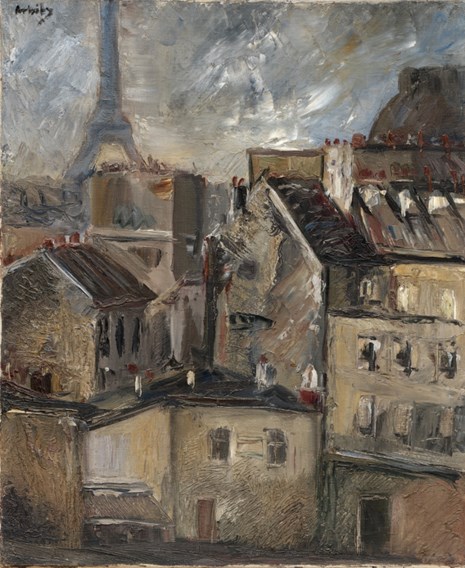Cityscapes were one of the most prominent subjects in the work of Arbit Blatas, an artist who is closely associated with the École de Paris.His views of Paris reveal his gradually maturing style, characterised by a completeness of form, emotional potency, and a subtle colour scheme.
One of his earliest landscapes shows a corner of Paris on a gloomy day. The canvas, painted before the Second World War, is in a free Expressionist style. Two thirds of the painting are occupied by houses of different sizes and heights, crowding densely close to the street. In the background looms the bright silhouette of the Eiffel Tower. The canvas is covered in wide, thick brush strokes, the artist introduces graphic texture quite unexpectedly, making marks with the wrong end of the brush, in the impasto layer of paint that was laid on with a pallette knife. The well-orchestrated colours in the painting are so fine that it is almost monochromatic. It is dominated by silver and olive semi-tones evoking the subtle light of the Île-de-France. The details of the town are enveloped in a silvery mist.
The young artist, who had come to the European capital of art, was clearly strongly influenced by the French colourist school. On his arrival from Kaunas in Paris in 1926, Arbit Blatas was fascinated by the light and the aerial perspective in canvases by Camille Pissaro, and by the colour combinations and the rhythmic expressiveness of Pierre Bonnard and Édouard Vuillard.



